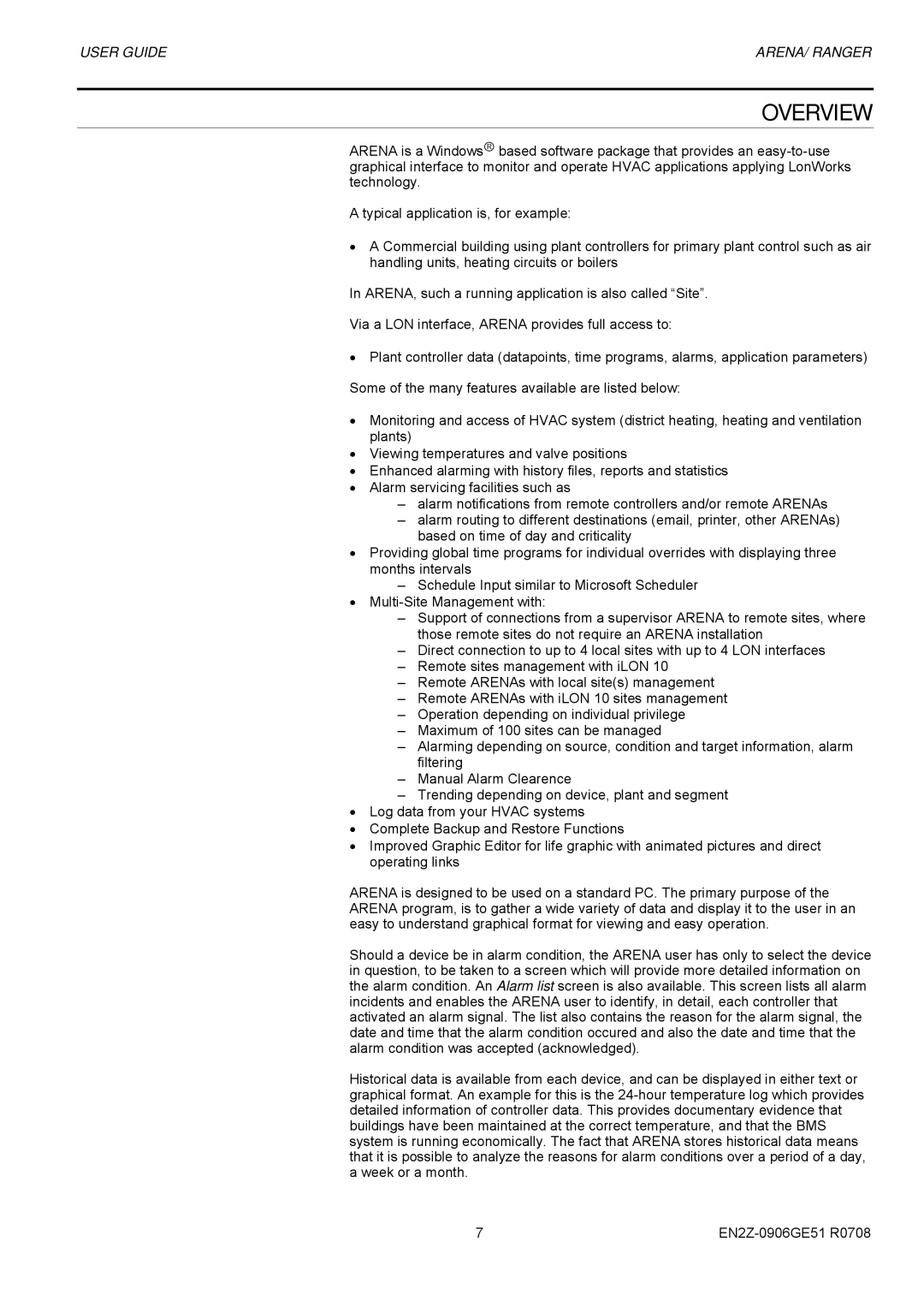USER GUIDE | ARENA/ RANGER |
OVERVIEW
ARENA is a Windows→ based software package that provides an
A typical application is, for example:
•A Commercial building using plant controllers for primary plant control such as air handling units, heating circuits or boilers
In ARENA, such a running application is also called “Site”.
Via a LON interface, ARENA provides full access to:
•Plant controller data (datapoints, time programs, alarms, application parameters) Some of the many features available are listed below:
•Monitoring and access of HVAC system (district heating, heating and ventilation plants)
•Viewing temperatures and valve positions
•Enhanced alarming with history files, reports and statistics
•Alarm servicing facilities such as
–alarm notifications from remote controllers and/or remote ARENAs
–alarm routing to different destinations (email, printer, other ARENAs) based on time of day and criticality
•Providing global time programs for individual overrides with displaying three months intervals
–Schedule Input similar to Microsoft Scheduler
•
–Support of connections from a supervisor ARENA to remote sites, where those remote sites do not require an ARENA installation
–Direct connection to up to 4 local sites with up to 4 LON interfaces
–Remote sites management with iLON 10
–Remote ARENAs with local site(s) management
–Remote ARENAs with iLON 10 sites management
–Operation depending on individual privilege
–Maximum of 100 sites can be managed
–Alarming depending on source, condition and target information, alarm filtering
–Manual Alarm Clearence
–Trending depending on device, plant and segment
•Log data from your HVAC systems
•Complete Backup and Restore Functions
•Improved Graphic Editor for life graphic with animated pictures and direct operating links
ARENA is designed to be used on a standard PC. The primary purpose of the ARENA program, is to gather a wide variety of data and display it to the user in an easy to understand graphical format for viewing and easy operation.
Should a device be in alarm condition, the ARENA user has only to select the device in question, to be taken to a screen which will provide more detailed information on the alarm condition. An Alarm list screen is also available. This screen lists all alarm incidents and enables the ARENA user to identify, in detail, each controller that activated an alarm signal. The list also contains the reason for the alarm signal, the date and time that the alarm condition occured and also the date and time that the alarm condition was accepted (acknowledged).
Historical data is available from each device, and can be displayed in either text or graphical format. An example for this is the
7 |
